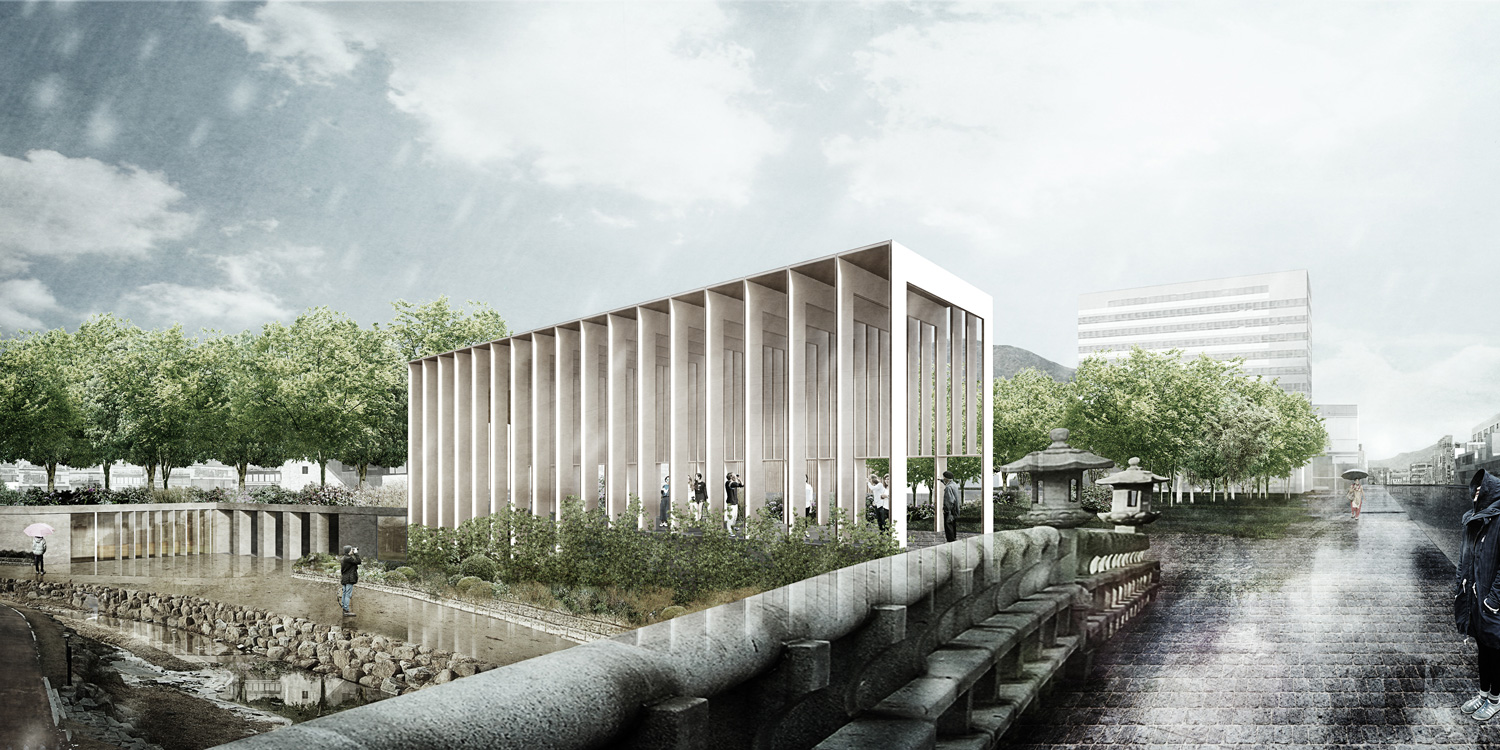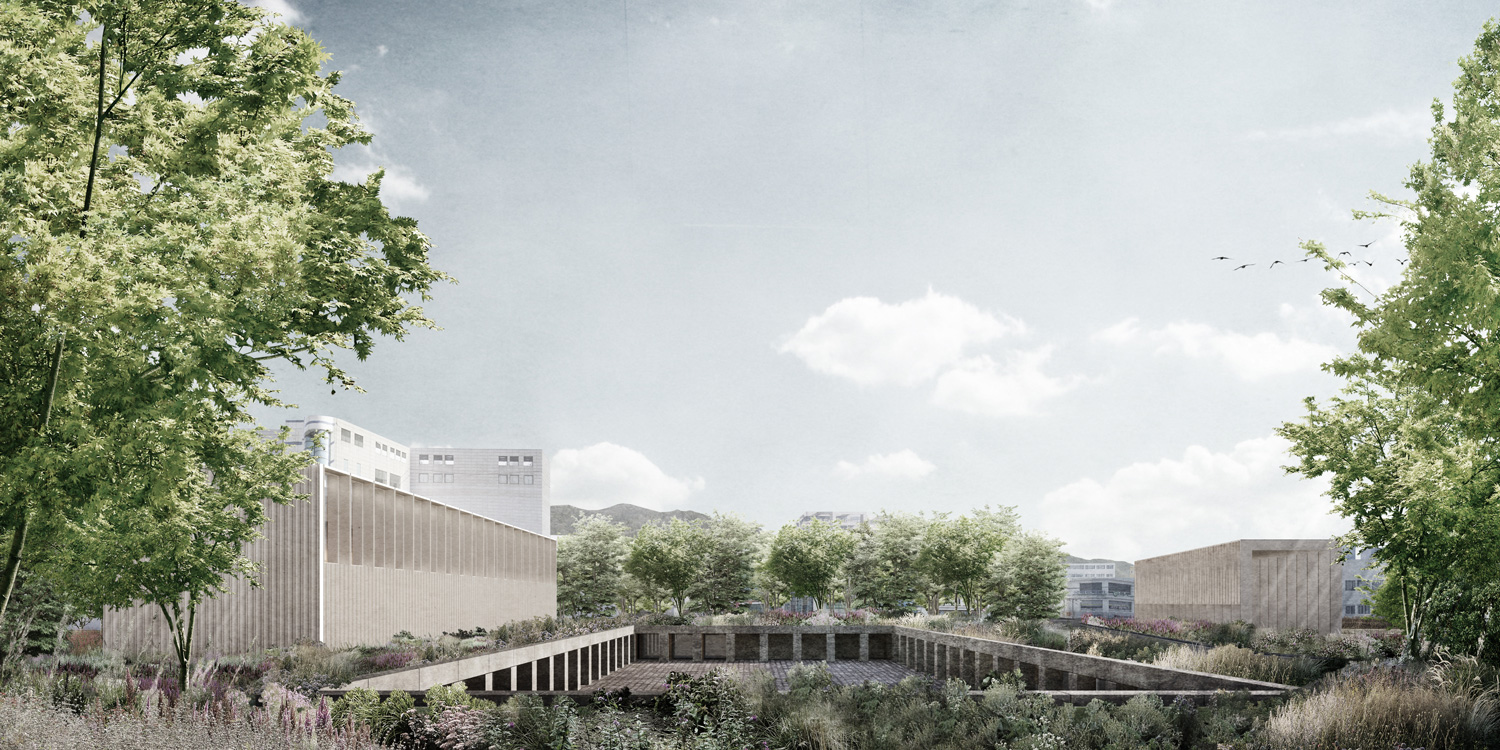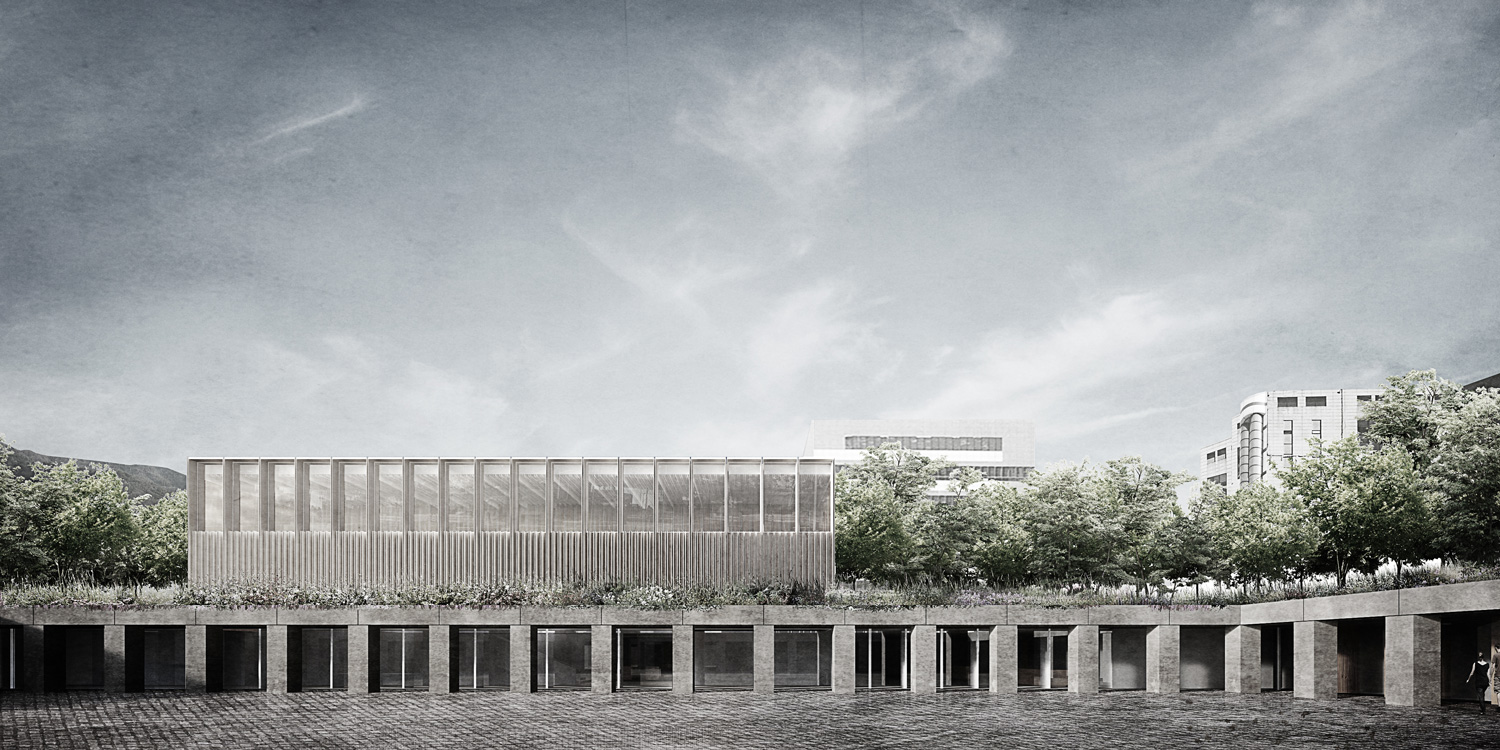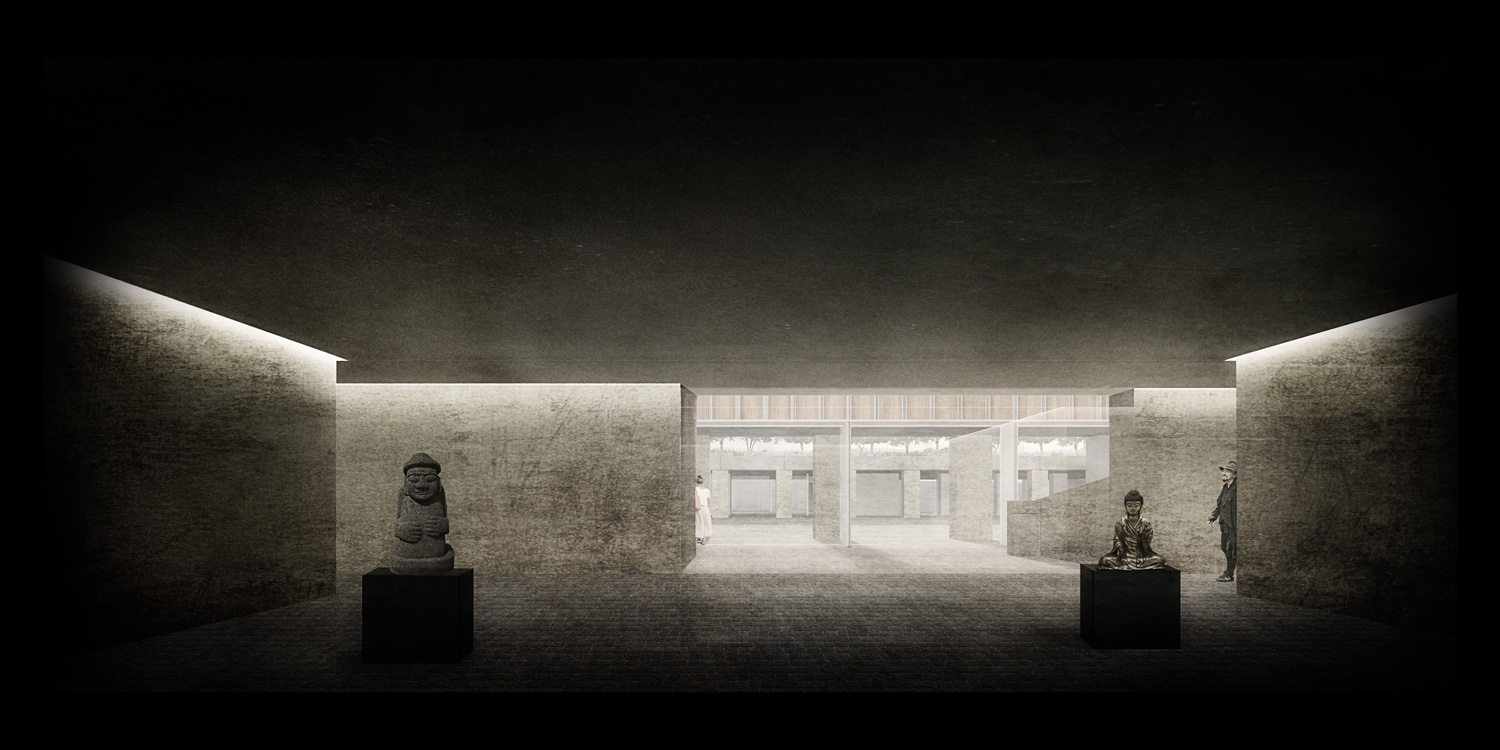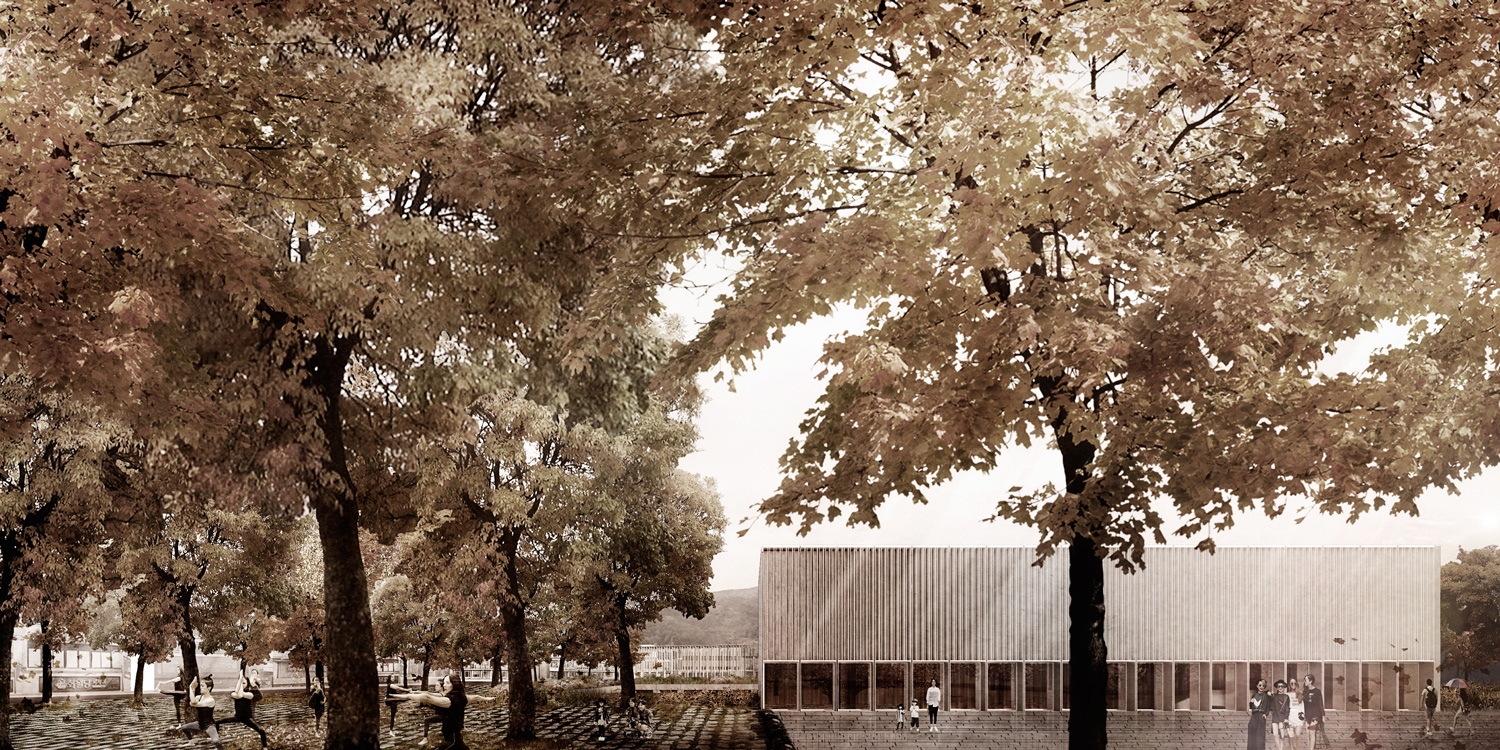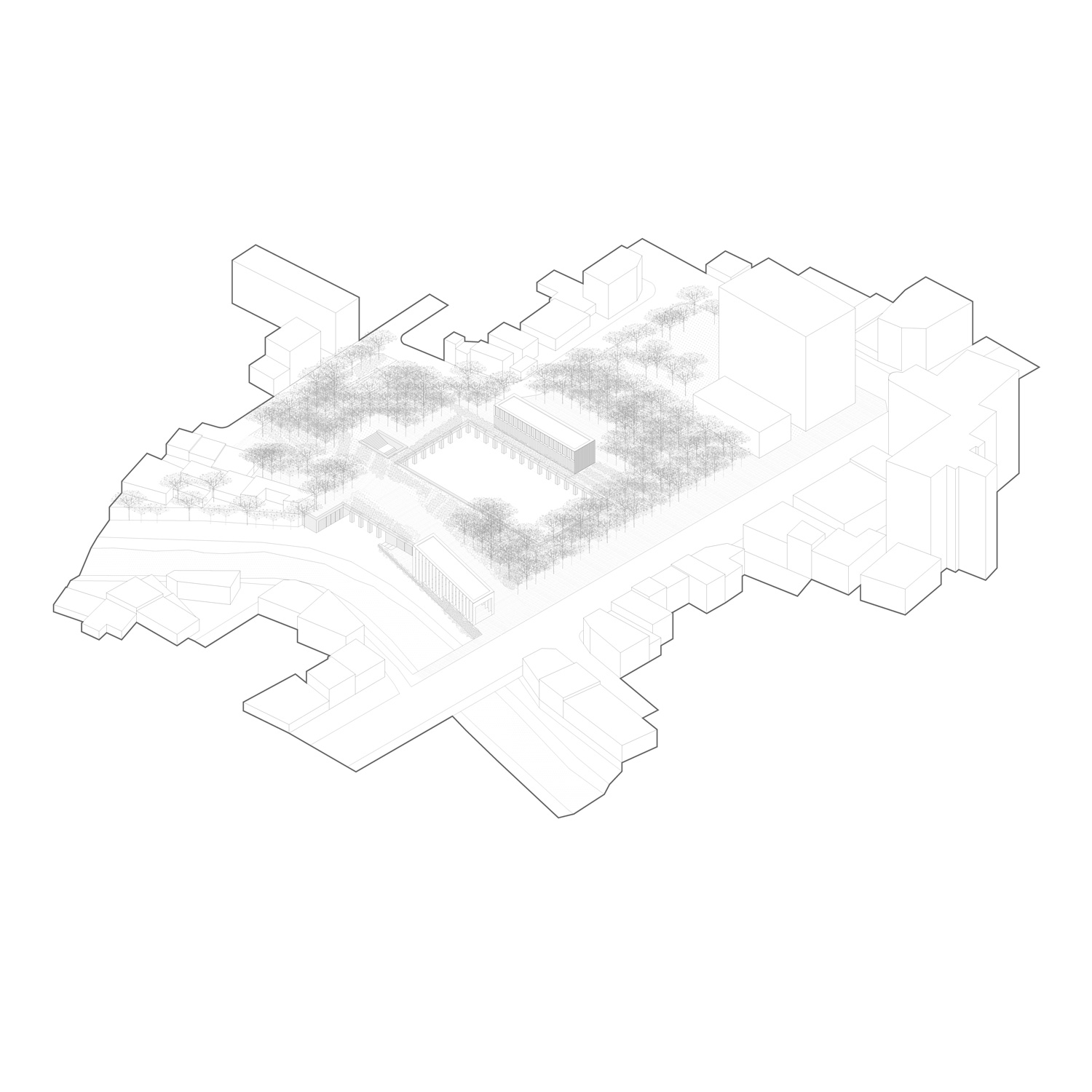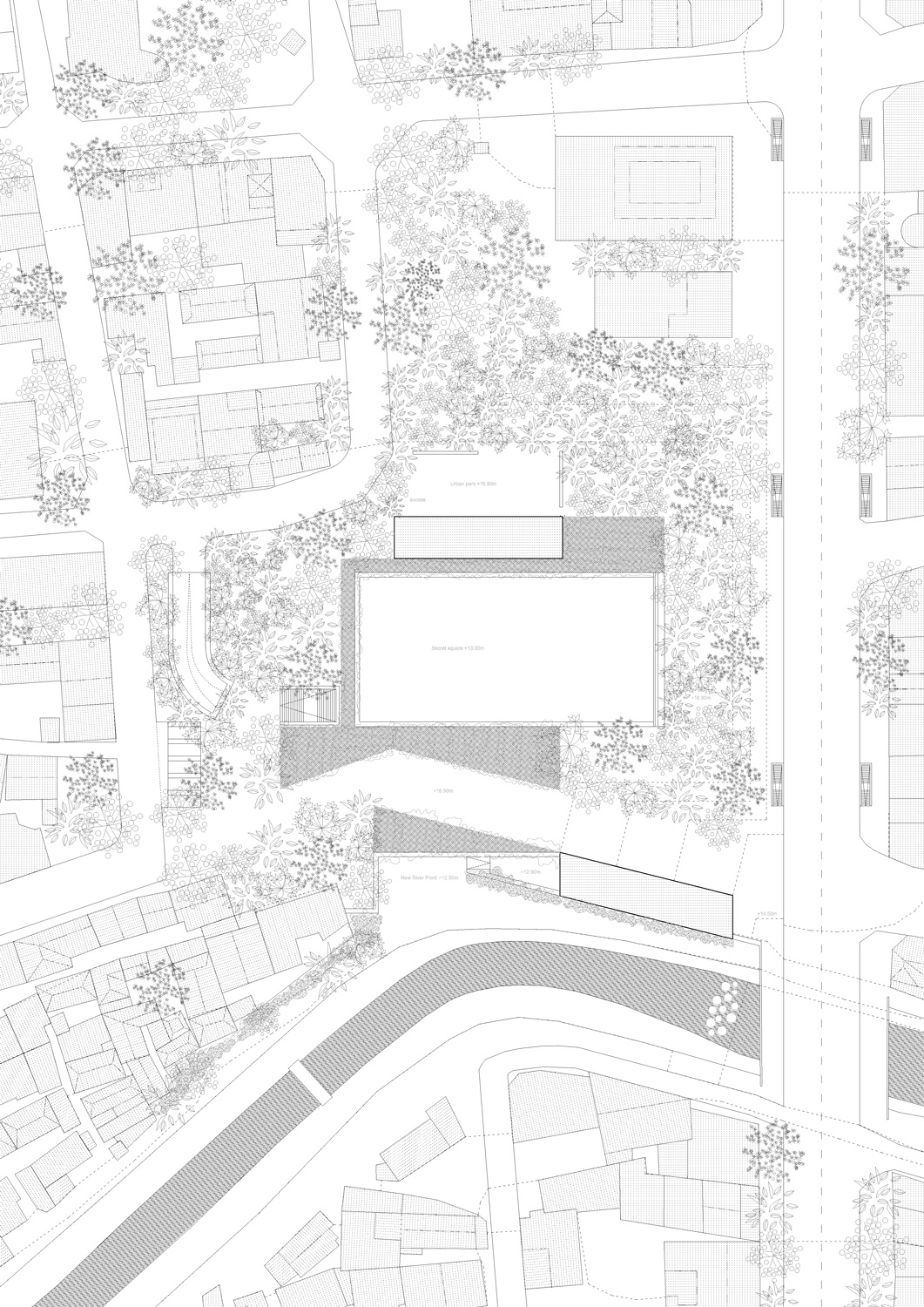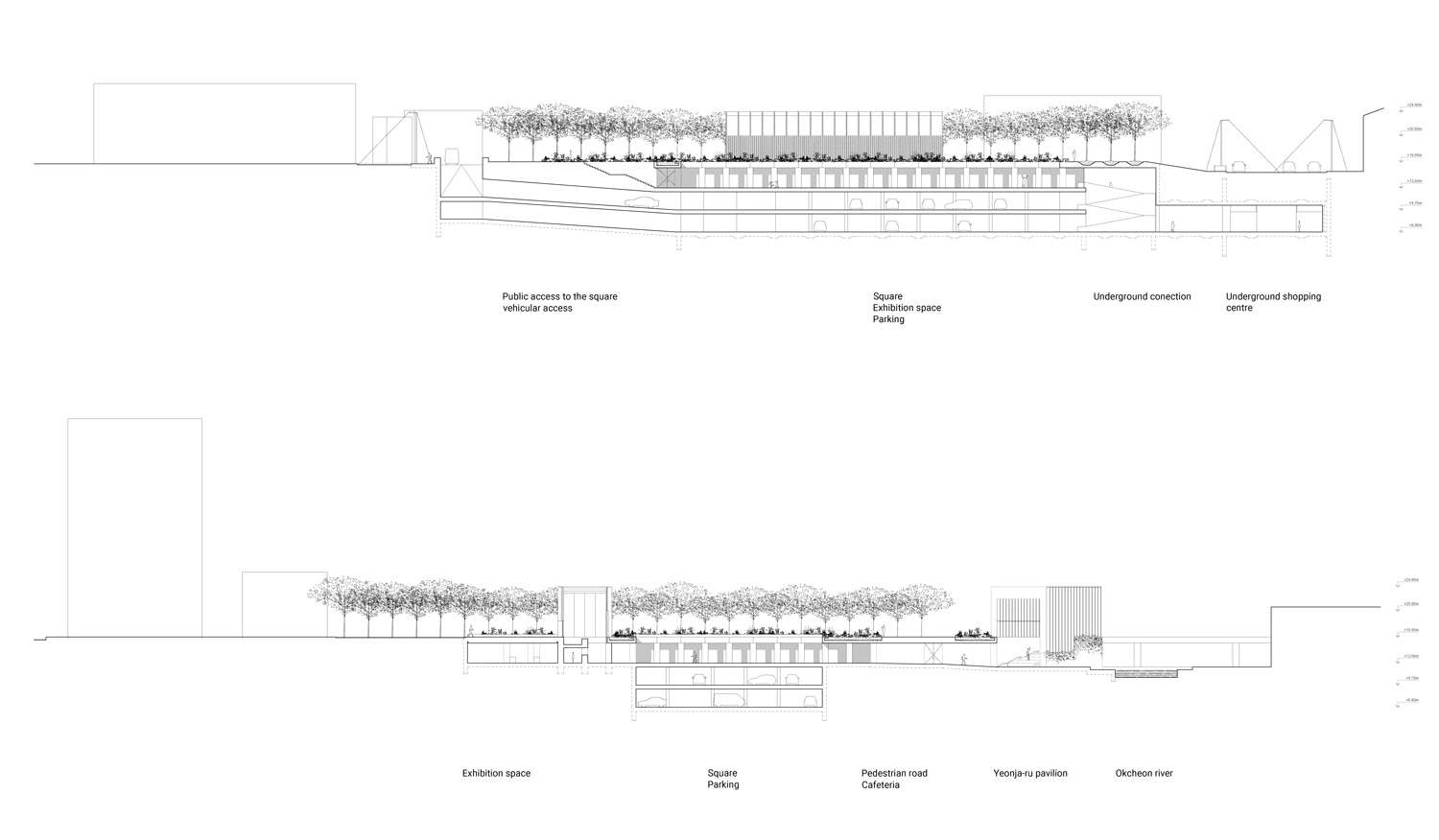1556-ADE-KR-2016
Client: City of Suncheon
Status: Competition (2016)
Clasification: 1 prize
Location: Suncheon, South Korea
Coordinates: 34.954151, 127.483479
Climate: Humid subtropical, Temperate
Materials: Stone, Metal, Vegetal
Environments: Riverside, Urban
Visualizer: Studio
Scale: Medium
Types: Cultural, Cultural center
Visitors to the Suncheon Art Platform will hail largely from the dense parts of the old city or the densely populated new town to the south. The proposal seeks to lend a psychological ‘void’ in the midst of this density by creating an open-to-sky quadrangle as a pure subtraction of ground. This strategy creates a seamless connection between the riverbank and this public space – a new linkage in the heart of the old city.
As culture is a dynamic construct that keeps evolving, the proposal aims to forge an urban relationship that might last longer than temporal processes. A park conceals the Art Platform from the neighbouring streets and their noise, creating a quiet cloister – a green island in the midst of urbanity. The built forms stand unassumingly within this landscape. By intending dense planting of flora on the site, the Humanities City might echo the efforts of the Eco-City of Suncheon, emphasising the significance of fostering natural environments within major urban settings.
The built
Two linear elements are added diagonally opposite each other to define the limits of the quadrangle. They share a relationship of duality and emphasise directionality from the riverbank in the south to the quadrangle and the Art Centre, and further onwards to the cultural streets that branch out towards the north. A cloister surrounds the quadrangle.
Through this threshold space that exists between light and shadow, visitors walk and access the subterranean rooms that are carved around the periphery of the void. The quadrangle is thus a free centre – a visual anchor point for this circulation. A proportional system based on the traditional measure ‘ka’ of 3.60 metres is used. The subterranean rooms are of an additive nature, having the potential to grow in small increments if required.
A layered stratification is created between the stereotomic cloister base in granite stone, and the light steel pavilions that rise from it. The overall built system is reminiscent of traditional Korean architecture, whilst opening up the heart of the old city to contemporary interpretation. An imagination of a sense of joy in discovering a hidden cloister in an urban forest, has guided the proposal. A play in contrasts between density and void, heaviness and lightness, the subterranean and the pavilion – has forged its meaning.
